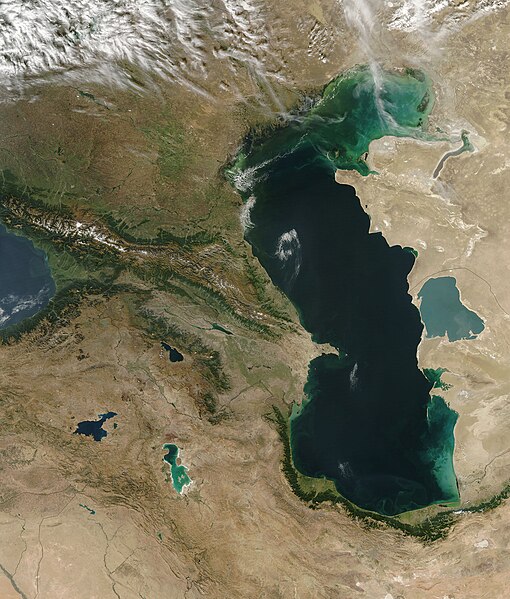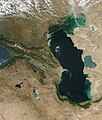Ficheiro:Satellite image of the Caucasus-Caspian Region.jpg

Dimensões desta antevisão: 510 × 599 píxeis. Outras resoluções: 204 × 240 píxeis | 409 × 480 píxeis | 654 × 768 píxeis | 872 × 1 024 píxeis | 1 703 × 2 000 píxeis.
Ficheiro original (1 703 × 2 000 píxeis, tamanho: 1,29 MB, tipo MIME: image/jpeg)
Histórico do ficheiro
Clique uma data e hora para ver o ficheiro tal como ele se encontrava nessa altura.
| Data e hora | Miniatura | Dimensões | Utilizador | Comentário | |
|---|---|---|---|---|---|
| atual | 05h44min de 26 de outubro de 2005 |  | 1 703 × 2 000 (1,29 MB) | Brian0918 | Caspian Sea and Georgia Sometimes referred to as the Caucasus Isthmus, the Caucasus-Caspian Region is a mixing-pot for scores of cultures. Due in part to its geographic isolation and having been in the path of numerous Eurasian migrations over the cent |
Utilização local do ficheiro
As seguintes 2 páginas usam este ficheiro:
Utilização global do ficheiro
As seguintes wikis usam este ficheiro:
- Uso no domínio ar.wikipedia.org
- Uso no domínio ast.wikipedia.org
- Uso no domínio bg.wikipedia.org
- Uso no domínio en.wikipedia.org
- Uso no domínio fr.wikipedia.org
- Uso no domínio fr.wiktionary.org
- Uso no domínio gcr.wikipedia.org
- Uso no domínio ky.wikipedia.org
- Uso no domínio mg.wikipedia.org
- Uso no domínio nn.wikipedia.org
- Uso no domínio no.wikipedia.org
- Uso no domínio oc.wikipedia.org
- Uso no domínio sq.wikipedia.org


